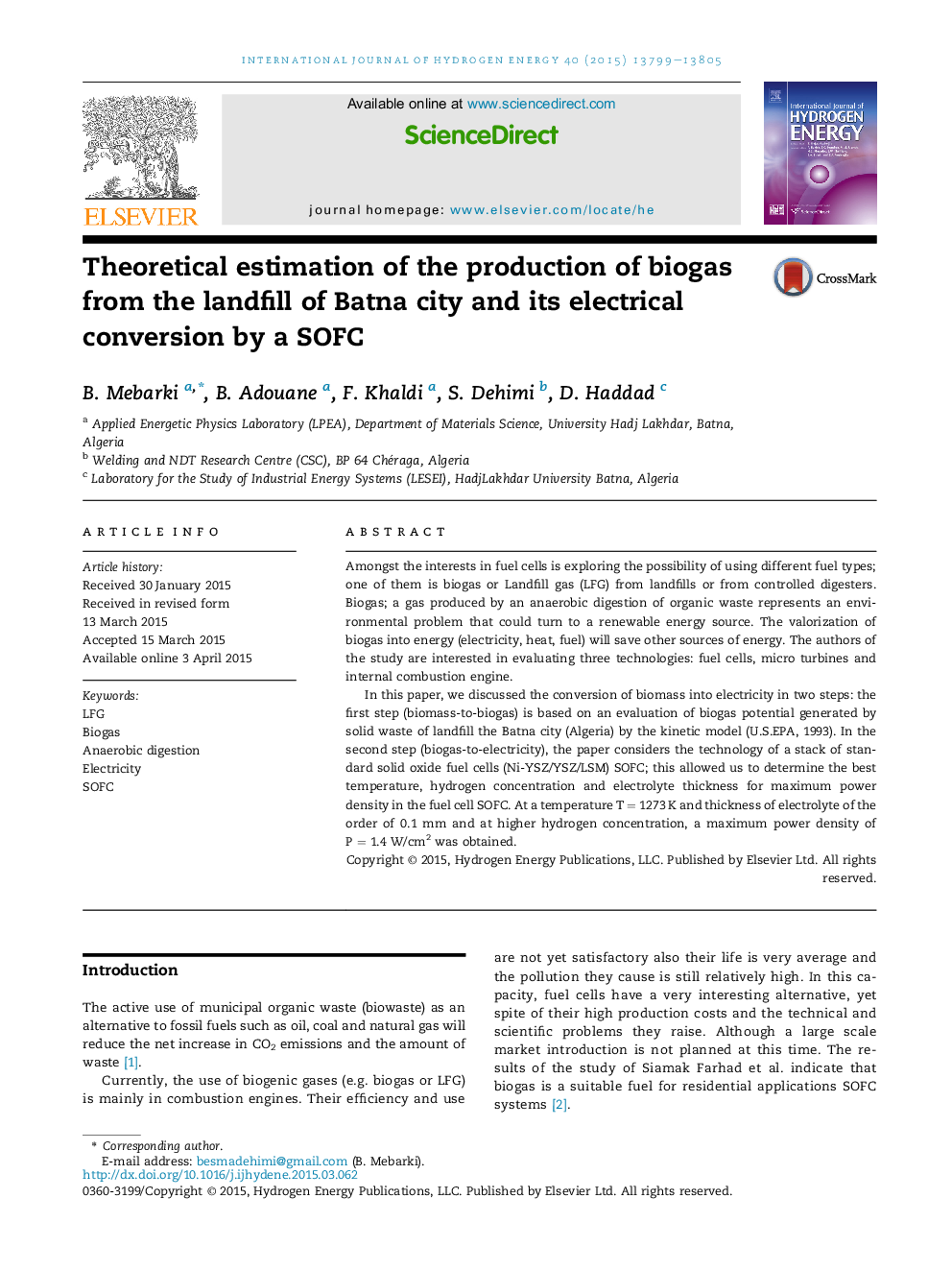| Article ID | Journal | Published Year | Pages | File Type |
|---|---|---|---|---|
| 1274673 | International Journal of Hydrogen Energy | 2015 | 7 Pages |
•Theoretical estimation of biogas through the biomass.•Electrical conversion of biogas by the SOFC.•Best conditions to achieve maximum power density.
Amongst the interests in fuel cells is exploring the possibility of using different fuel types; one of them is biogas or Landfill gas (LFG) from landfills or from controlled digesters. Biogas; a gas produced by an anaerobic digestion of organic waste represents an environmental problem that could turn to a renewable energy source. The valorization of biogas into energy (electricity, heat, fuel) will save other sources of energy. The authors of the study are interested in evaluating three technologies: fuel cells, micro turbines and internal combustion engine.In this paper, we discussed the conversion of biomass into electricity in two steps: the first step (biomass-to-biogas) is based on an evaluation of biogas potential generated by solid waste of landfill the Batna city (Algeria) by the kinetic model (U.S.EPA, 1993). In the second step (biogas-to-electricity), the paper considers the technology of a stack of standard solid oxide fuel cells (Ni-YSZ/YSZ/LSM) SOFC; this allowed us to determine the best temperature, hydrogen concentration and electrolyte thickness for maximum power density in the fuel cell SOFC. At a temperature T = 1273 K and thickness of electrolyte of the order of 0.1 mm and at higher hydrogen concentration, a maximum power density of P = 1.4 W/cm2 was obtained.
